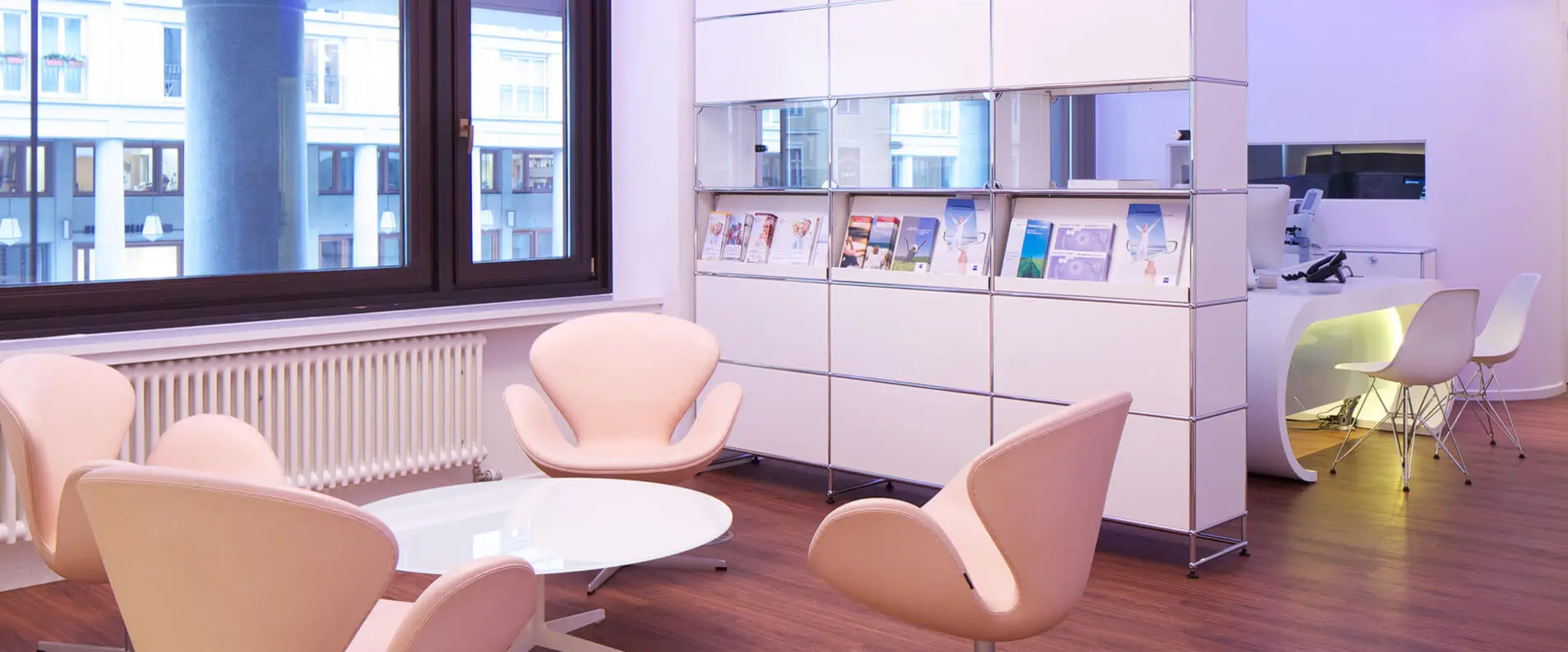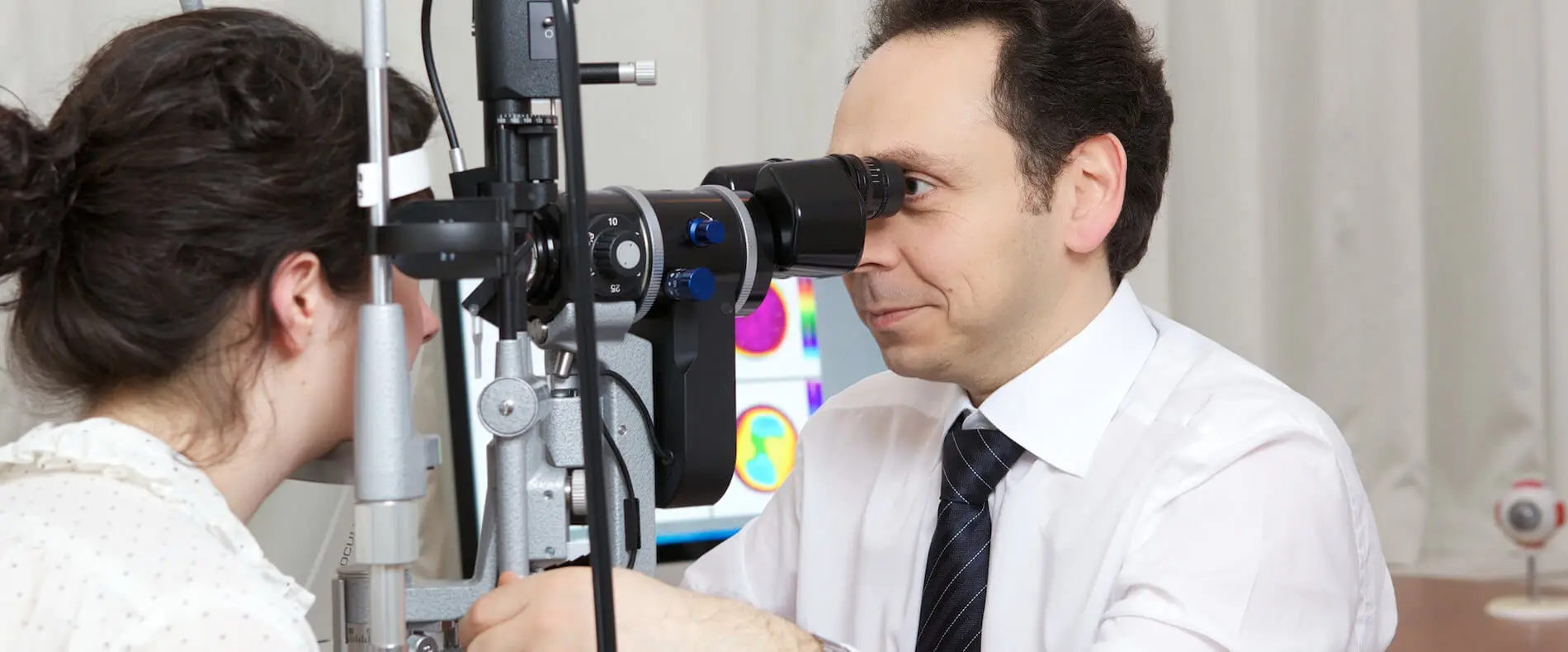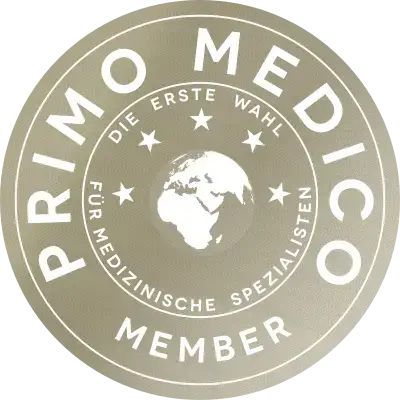

Vitrectomy and retinal surgery in Berlin Eye Clinic (Charlottenburg)
Retinal diseases are the most common cause of blindness in middle-aged and elderly patients in developed industrialised nations. The most common retinal disease is diabetic retinopathy. This disease should be monitored continuously by a doctor in order to detect treatable changes before irreversible vision loss occurs.
The treatment options for diabetic retinopathy are laser and anti-VEGF/steroid injections (IVOM). Severe cases with proliferations can lead to bleeding in the eye socket. In this case, a vitrectomy (removal of the vitreous body) can be performed, followed by laser treatment and possible removal of membranes. As your experienced eye surgeon in Berlin, we are always happy to help you with all types of vitreous and retinal diseases.
Vitreous and retinal surgery
- Diabetic retinopathy
- Age-related macular degeneration (AMD)
- Epiretinal gliosis
- Modern eye surgery laser technology
If you require eye surgery for vitreous and retinal diseases such as diabetic retinopathy, AMD or epiretinal gliosis, you are in good hands at our Berlin eye clinic, which is equipped with the latest treatment technology – we would be happy to advise you personally.
Modern eye surgery procedures in Berlin
Age-related macular degeneration (circulatory disorder of the macula) is divided into a dry form (90% of cases) and a wet form (responsible for more than 90% of blindness caused by AMD). It is the most common cause of blindness in older people.
There are currently no active treatment options for the dry form of AMD. However, dietary supplements such as antioxidants, lutein, zeaxanthin and omega-3 can slow down the progression of dry macular degeneration. Wet macular degeneration is mainly treated with intravitreal medication.
Epiretinal gliosis is caused by the formation of a membrane on the retina. It is divided into a primary (without cause) and a secondary (due to previous laser treatment, eye contusion or inflammation) variant. Central epiretinal gliosis affects the macula (yellow spot) and causes visual impairment and metamorphopsia (wavy vision).
Treatment consists of a vitrectomy (staining and removal of the membrane, followed by the injection of gas into the eyeball, which remains inside the eye for 10 to 14 days until it is replaced by the eye’s own aqueous humour). The diagnosis ‘macular hole’ refers to a hole in the central retina or macula caused by a membrane that pulls apart central parts of the retina. This causes a significant decrease in visual acuity. As with epiretinal gliosis, treatment consists of a vitrectomy.
At our Berlin Eye Clinic, vitrectomy is performed as a pars plana vitrectomy with 23 gauge as an outpatient procedure, usually under local anaesthesia. General anaesthesia is only necessary in rare cases. In pars plana vitrectomy, the vitreous body, a gel-like substance that makes up about 80% of the internal volume of the eye, is removed in order to perform laser treatment, enable surgical manipulation or remove opacities in the vitreous body.
Consultation and appointments
If necessary, we will find a suitable treatment option for you in the field of vitreous and retinal surgery in Berlin (Charlottenburg), make your appointment at Doctolib.com under IVOM.
Vitrectomy and retinal surgery in Berlin Eye Clinic (Charlottenburg)
Retinal diseases are the most common cause of blindness in middle-aged and elderly patients in developed industrialised nations. The most common retinal disease is diabetic retinopathy. This disease should be monitored continuously by a doctor in order to detect treatable changes before irreversible vision loss occurs.
The treatment options for diabetic retinopathy are laser and anti-VEGF/steroid injections (IVOM). Severe cases with proliferations can lead to bleeding in the eye socket. In this case, a vitrectomy (removal of the vitreous body) can be performed, followed by laser treatment and possible removal of membranes. As your experienced eye surgeon in Berlin, we are always happy to help you with all types of vitreous and retinal diseases.
Vitreous and retinal surgery
- Diabetic retinopathy
- Age-related macular degeneration (AMD)
- Epiretinal gliosis
- Modern eye surgery laser technology
If you require eye surgery for vitreous and retinal diseases such as diabetic retinopathy, AMD or epiretinal gliosis, you are in good hands at our Berlin eye clinic, which is equipped with the latest treatment technology, we would be happy to advise you personally.
Modern eye surgery procedures in Berlin
Age-related macular degeneration (circulatory disorder of the macula) is divided into a dry form (90% of cases) and a wet form (responsible for more than 90% of blindness caused by AMD). It is the most common cause of blindness in older people.
There are currently no active treatment options for the dry form of AMD. However, dietary supplements such as antioxidants, lutein, zeaxanthin and omega-3 can slow down the progression of dry macular degeneration. Wet macular degeneration is mainly treated with intravitreal medication.
Epiretinal gliosis is caused by the formation of a membrane on the retina. It is divided into a primary (without cause) and a secondary (due to previous laser treatment, eye contusion or inflammation) variant. Central epiretinal gliosis affects the macula (yellow spot) and causes visual impairment and metamorphopsia (wavy vision).
Treatment consists of a vitrectomy (staining and removal of the membrane, followed by the injection of gas into the eyeball, which remains inside the eye for 10 to 14 days until it is replaced by the eye’s own aqueous humour). The diagnosis ‘macular hole’ refers to a hole in the central retina or macula caused by a membrane that pulls apart central parts of the retina. This causes a significant decrease in visual acuity. As with epiretinal gliosis, treatment consists of a vitrectomy.
At our Berlin Eye Clinic, vitrectomy is performed as a pars plana vitrectomy with 23 gauge as an outpatient procedure, usually under local anaesthesia. General anaesthesia is only necessary in rare cases. In pars plana vitrectomy, the vitreous body, a gel-like substance that makes up about 80% of the internal volume of the eye, is removed in order to perform laser treatment, enable surgical manipulation or remove opacities in the vitreous body.
Consultation and appointments
If necessary, we will find a suitable treatment option for you in the field of vitreous and retinal surgery in Berlin (Charlottenburg), make your appointment at Doctolib.com under IVOM.


